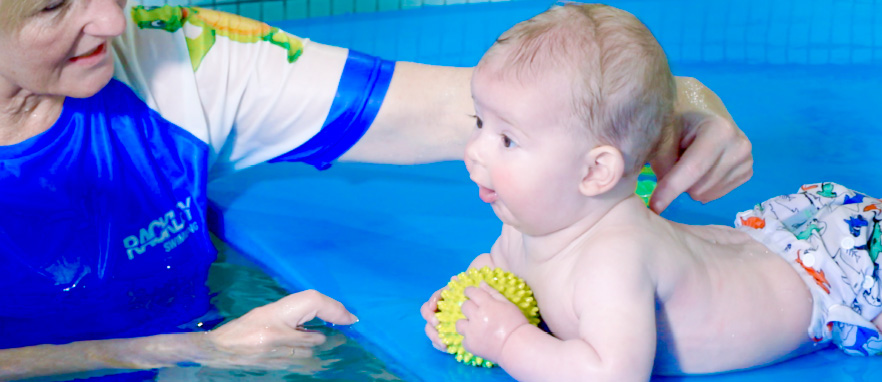Stimulating Arm Movements
Baby Splash Program: Helping to stimulate baby arm movements

What can I do at home?
Child development doesn’t happen in isolation but is a combined action of all the moving parts. These little activities all stimulate arm movement.
Massaging your babies’ hands and playing games with their fingers, wakes the senses and stimulates the grasping reflex. As they master the art of grasping, direct reaching for a toy appears. Be ready – everything goes into their mouth!
What is tummy time and why is it important?
According to the National Institutes of Health, babies should start tummy time the day they come home from the hospital. It is recommended that they receive 3-5 minutes 2-3 times a day and gradually increase to a total of one hour per day by the age of 4 months.
Up to 6 months of age, your baby is developing voluntary head and arm movement. Their focus in their world is to develop whole body movement. As part of this process is developing visual tracking, focusing on objects close to their body and objects in the distance all enhance this development. Allowing your baby to be on the floor to experience whole body movement, as well as the time in water assist with the opportunity to control their head, hands, arms, and legs.
This action develops the arm muscles ready for propping and getting ready to move. Tummy time encourages your baby to use their arms and hands in a variety of ways. Their curiosity drives their interest in raising their head and upper body with their arms. This important developmental action, your baby learns to lift and turn their head, strengthening the neck and shoulder muscles, essential for sitting, propping, and standing.
What are some activities I can do with my baby to stimulate fine motor skills?
Sensory experiences through skin-on-skin touch, drawing circles on your baby’s hand, massaging in between the fingers are all simple, yet beneficial moments to the bonding with your baby. Placing a variety of fabrics into their hands, blankets, carpets, water, and toys enhances these sensory experiences.